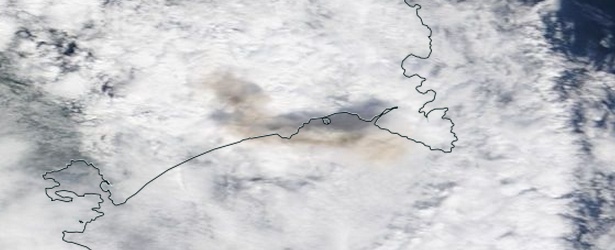Zhupanovsky erupts, sends ash plume up to 11.6 km a.s.l. – Kamchatka

The Zhupanovsky volcano in Kamchatka (Russia) erupted several times today and sent ash plume to an altitude of about 11.6 km above sea level. According to Tokyo VAAC, ash plume drifted southeast. Travel firms have been advised not conduct guided tours near Zhupanovsky.
"Two ash clouds were formed, which have drifted to, respectively, 200 and 80 kilometers southeast of the volcano. One of them is above the Pacific Ocean and the other above the Avachinsky Gulf," a spokesman for the Kamchatka Department of the Russian Academy of Sciences' Geophysical Service told Interfax.
The Emergency Situations Ministry's Kamchatka Department said that there are no populated areas on the clouds' way and that no fallout of volcanic dust has been registered.
By 18:00 UTC volcanic ash was no longer visible on sattelite imagery.
KVERT reported that during August 22 – 28 the moderate explosive eruption continued at Zhupanovsky. On August 28 ash plumes rose to 3.5 – 4 km a.s.l. and drifted 80 km SW. During August 25 – 27 satellite data showed a thermal anomaly over the volcano, but clouds prevented observations the other days of the week. The Tokyo VAAC reported that ash plumes rose to 4.3 km (14,000 ft) a.s.l. and drifted SW.
Geologic summary
The Zhupanovsky volcanic massif consists of four overlapping stratovolcanoes along a WNW-trending ridge. The elongated volcanic complex was constructed within a Pliocene-early Pleistocene caldera whose rim is exposed only on the eastern side. Three of the stratovolcanoes were built during the Pleistocene, the fourth is Holocene in age and was the source of all of Zhupanovsky's historical eruptions.
An early Holocene stage of frequent moderate and weak eruptions from 7000 to 5000 years before present (BP) was succeeded by a period of infrequent larger eruptions that produced pyroclastic flows. The last major eruption took place about 800-900 years BP. Historical eruptions have consisted of relatively minor explosions from the third cone. (GVP)
Featured image: NASA Terra / MODIS on September 7, 2014.

Whoomp there it is